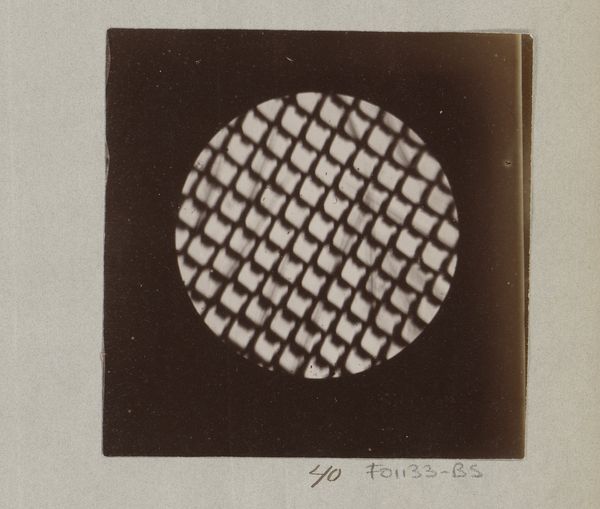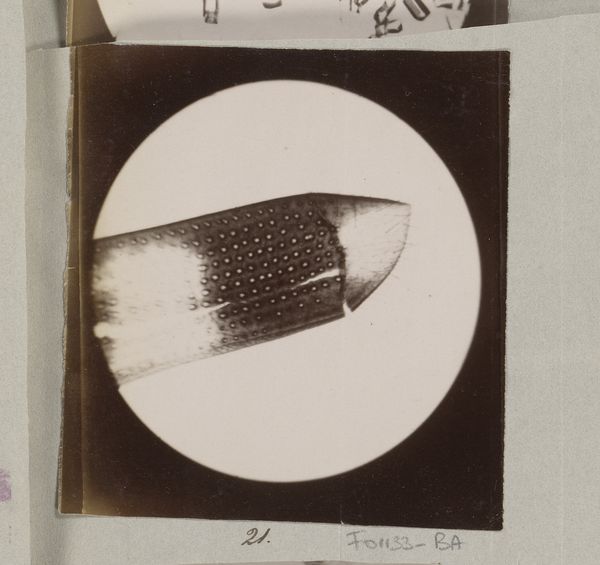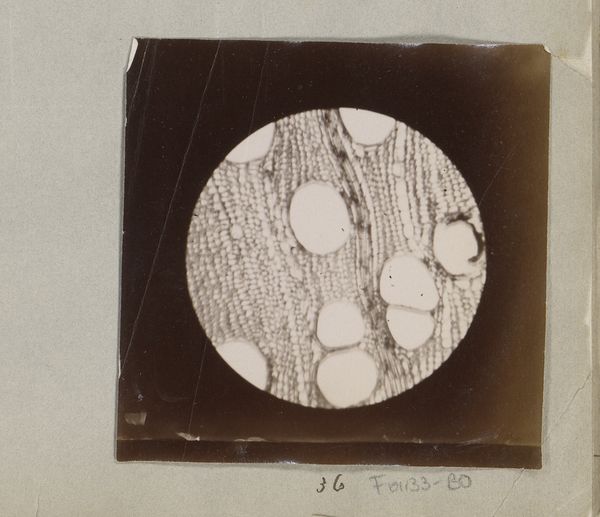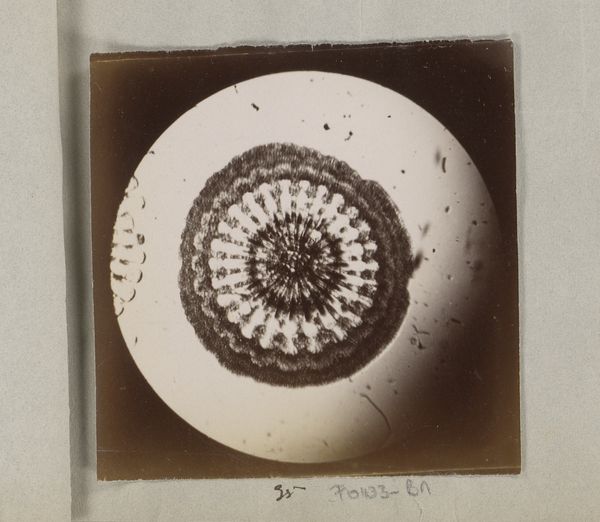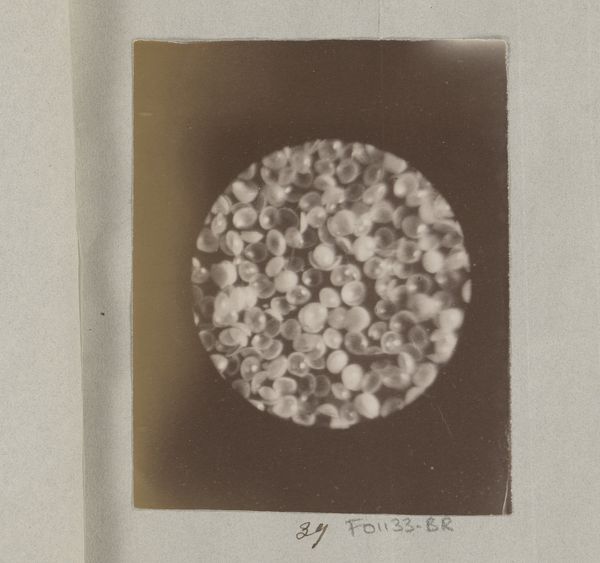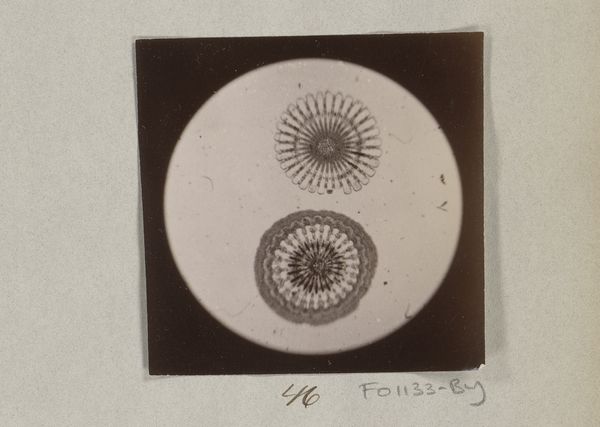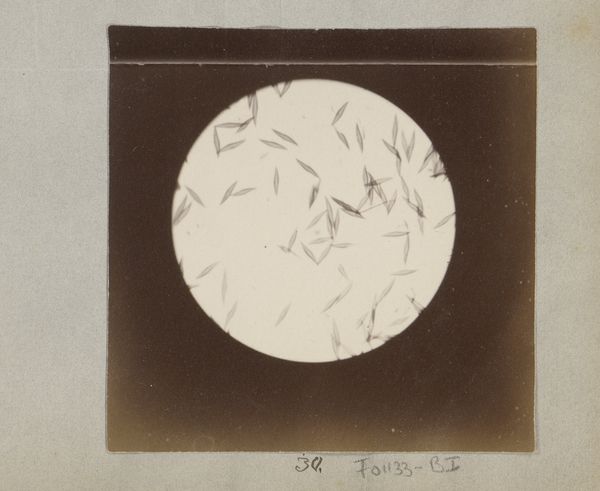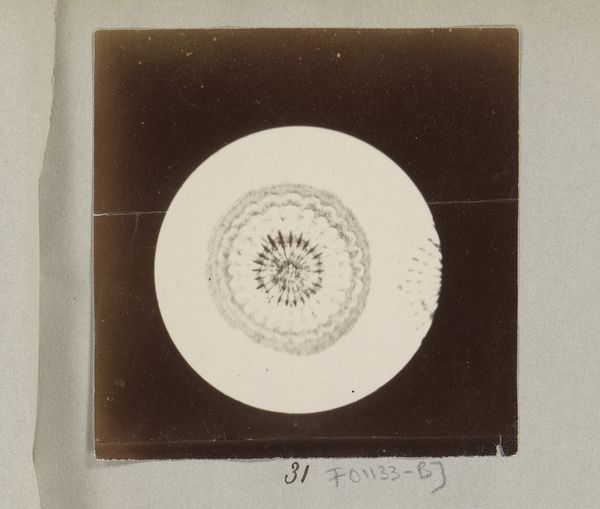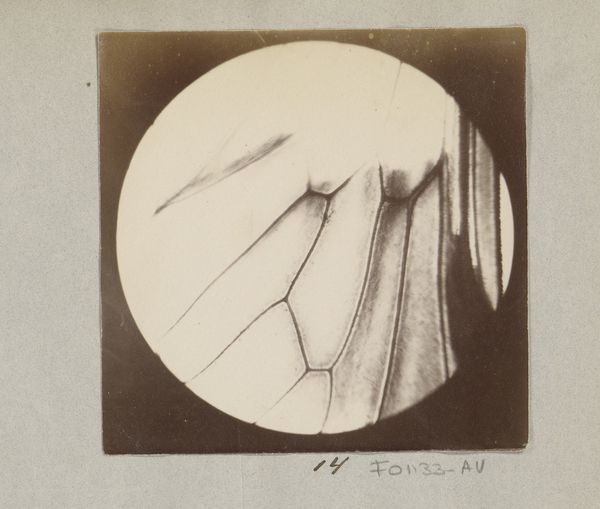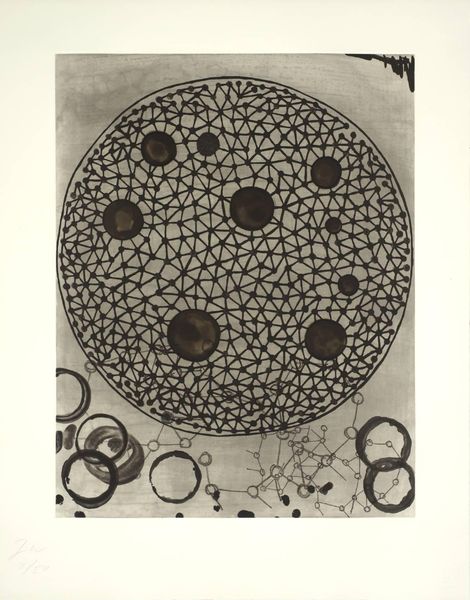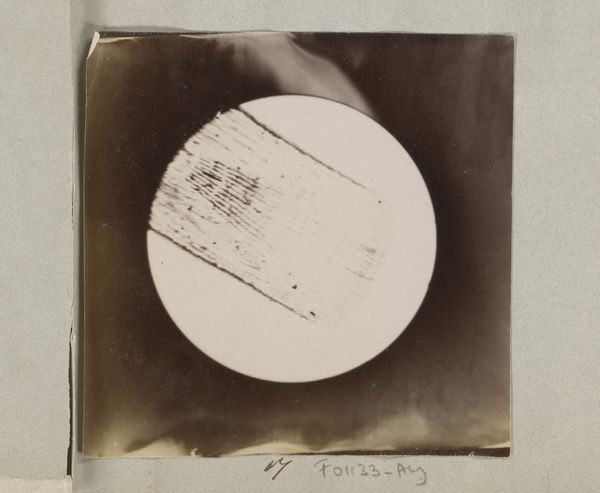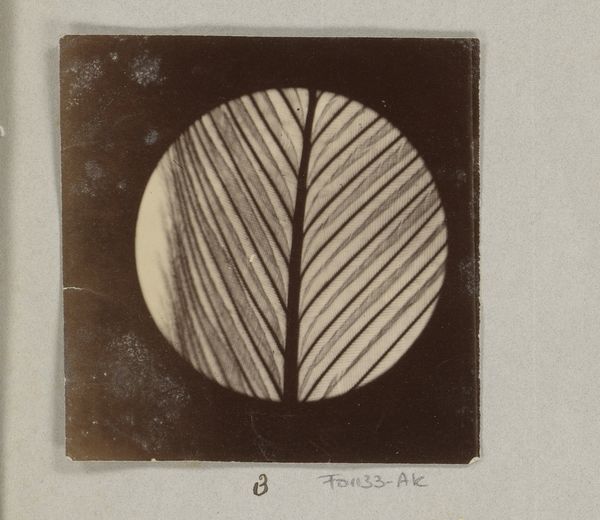
Microscopische opname van een vliegenoog, zestig keer vergroot 1887 - 1888
0:00
0:00
photography
#
still-life-photography
#
tonal
#
photography
#
realism
Dimensions: height 79 mm, width 76 mm
Copyright: Rijks Museum: Open Domain
Curator: Well, this is quite the intriguing specimen. We're looking at "Microscopische opname van een vliegenoog, zestig keer vergroot," or, in English, "Microscopic Photograph of a Fly's Eye, Magnified Sixty Times" by Marinus Pieter Filbri, taken sometime between 1887 and 1888. It's a photograph, a still life, and what do you make of it? Editor: My first thought? Intricate and unsettling. All those tiny… compartments? It feels both alien and utterly, inescapably biological. It makes me feel almost claustrophobic, imagining being inside it. Curator: It speaks to the increasing interest in scientific observation and representation at the end of the 19th century. The means of production matter here: advances in microscopy and photographic technology. Imagine the skill involved in aligning the lenses and lighting just so! The photographer isn't merely documenting; they are producing an aesthetic object out of scientific process. Editor: Absolutely, there’s an undeniable aesthetic pull. I keep thinking about the contrast between the geometric precision of those cells, the almost manufactured look, and the underlying fact that this is nature, organic, living. It is almost dreamlike. Curator: And think of the labor and resources behind its production. Gelatin silver prints like this demanded specialized materials, darkroom skills. Photography was a costly, chemical, alchemical pursuit, reflecting particular class access to both the technology and the science it portrays. Editor: It's like looking at the blueprints of an alien world, one that's always been right under our noses. You know, I imagine Filbri bent over his equipment, totally absorbed. It is such a hidden world he wanted to illuminate. What about the way this changes your sense of scale, almost to infinity. Curator: Precisely! A tangible product born from material conditions. The very act of observation is shaped by economic and technical means. The consumption of science for public, education, and entertainment purposes, it is something the late 19th century did so well. Editor: A truly thought-provoking work. Curator: It is. A beautiful fusion of art, science, and industry that still resonates.
Comments
No comments
Be the first to comment and join the conversation on the ultimate creative platform.
